Paterson City Hall
Introduction
Text-to-speech Audio
Images
1994 photo of front of Paterson City Hall, looking NE (Voith and Mactavish)
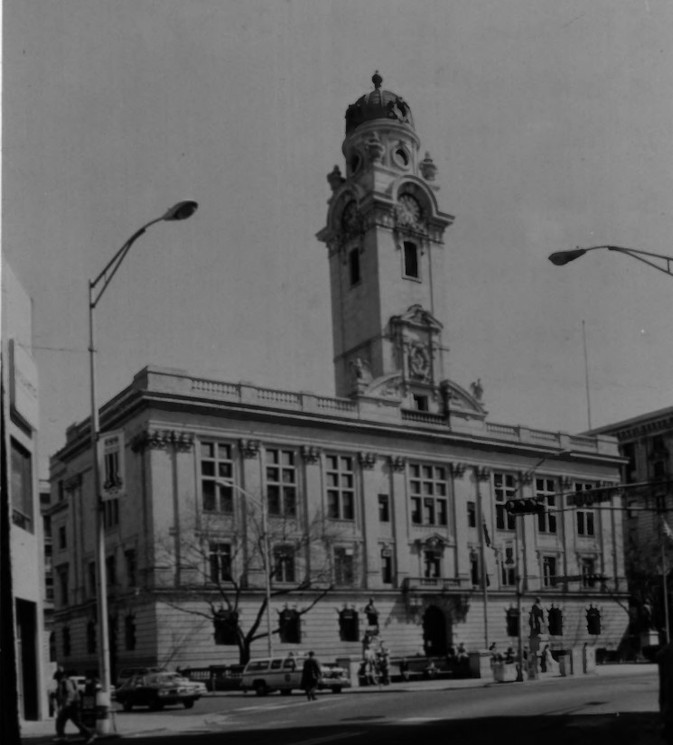
City Hall on 1950 update of 1915 Sanborn map (Vol. 1 p. 7)
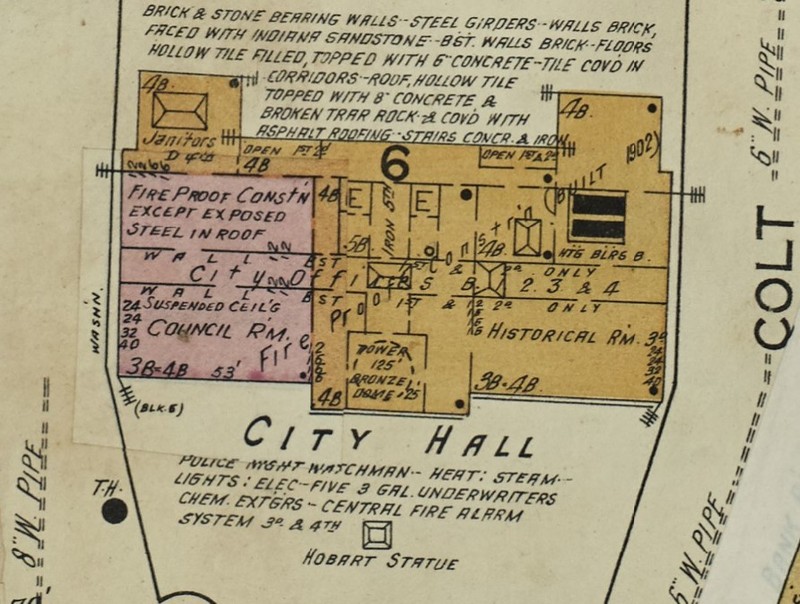
City Hall (green arrow) on 1899 Sanborn map of Paterson (Vol. 1 p. 2)
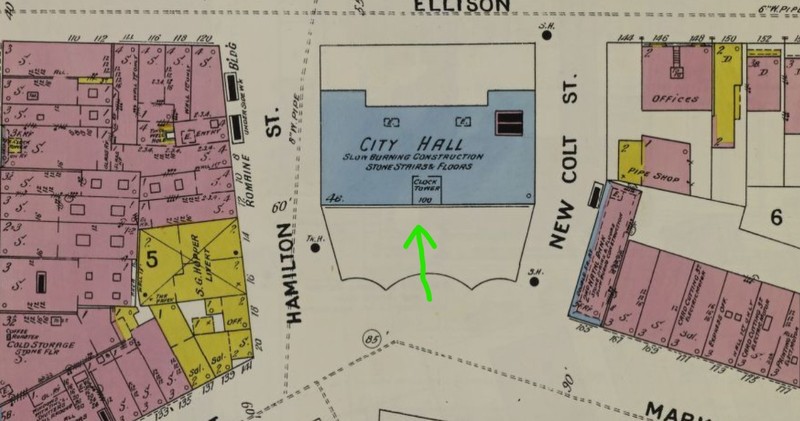
Old City Hall (red circle) on 1893 map; 1896 City Hall location marked (green rectangle; American Directory & Publishing Co.)
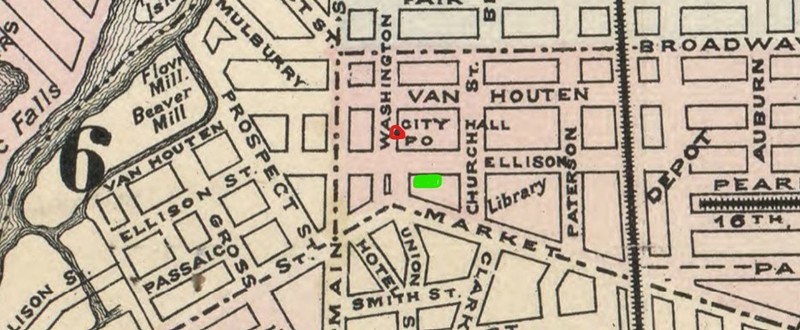
Photo of Ellison Street side of City Hall looking SW 1994 (Voith and Mactavish)
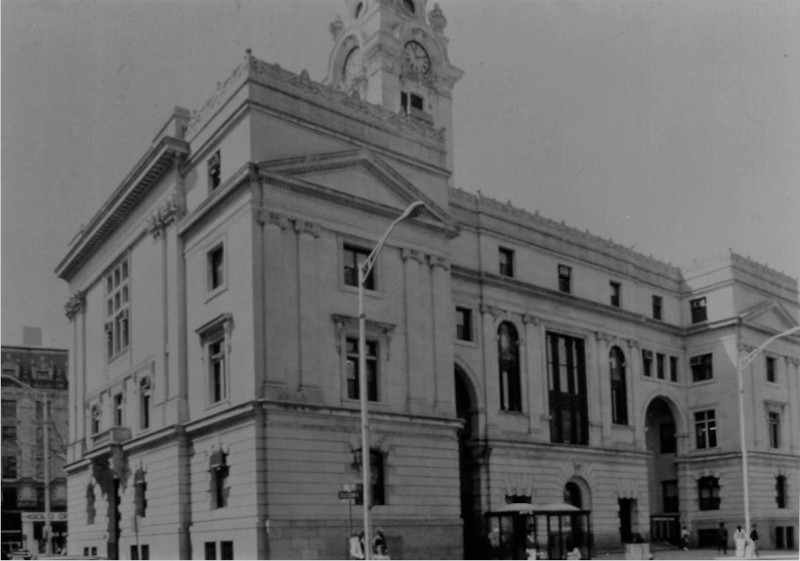
John Ryle commemorative stained glass window in City Hall in 1994 photo, looking N (Voith and Mactavish)
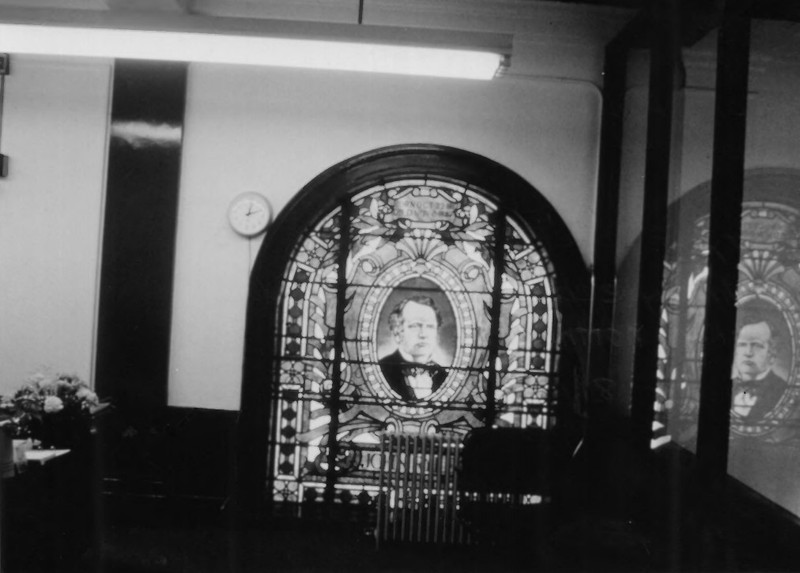
Backstory and Context
Text-to-speech Audio
The people of Paterson petitioned for their own government in 1831, and the New Jersey Legislature established the Township of Paterson. Twenty years later, the voters endorsed the formation of the City of Paterson; a charter created the "President and Council of the City of Paterson." The first City Council meeting was held in the law office of Socrates Tuttle and subsequent meetings took place in the house of Ann Cunningham, on Main Street near Van Houten. The titles were soon changed to Mayor and Alderman; each Alderman wore a leather badge, inscribed with the ward of the city that they represented. The city acquired and significantly expanded the former house of Aaron S. Pennington on Washington Street for use as the first city hall. This project required cutting back the slope and adding onto the lower level.
Plans for the centennial of Paterson in 1896 included building a new city hall. In 1891, the Centennial Committee, including Edward T. Bell. a local banker, proposed that the city "construct a building for municipal purposes commemorating the progress and achievements" of the people in Paterson in the last one hundred years, containing a floor or room to hold objects related to the city's history. A number of proposed sites for the new city hall were visited, and the one chosen was the location of the Hamilton House property on Ellison. Colt, and Market Streets. The city condemned and sold the house and paid the tenants to shorten their lease. The architectural firm chosen was Carrere and Hastings from New York City. The city hall took four years to build and was dedicated at centennial celebrations on July 6th 1896. The building occupies a location called Hamilton Square.
The new city hall was among the buildings damaged by a huge fire that raged in the center of the city on February 9th and 10th 1902. While the stone exterior survived, much was too damaged and had to be replaced; the interior of city hall was a total loss. The former city hall also was destroyed in the fire. Temporarily, the mayor and other city officials met in parts of the courthouse, the jail, and the post office. Two commemorative stained glass windows by New Yorker H.T. Schladermundt, unveiled in 1897, survived the fire; one honors John Ryle, the father of the local silk industry and the other depicts the city's first mayor, John J. Brown. The redone City Hall, completed using the original plans and builders, reopened in November 1903.
When viewing the front, facing Market Street, the building looks to only have three stories; the fourth floor is set back, and is seen on the rear of the building, along Ellison Street, along with the projecting rear wings. The secondary plaza along Ellison Street used to have lawns and curved walkways; when Ellison Street was widened in 1973, some of the plaza was lost and the remainder is now concrete-surfaced. Centered doors on the south (main) and north facades lead to vestibules with arched ceilings; arched doorways enter the central lobby with the main staircase and elevators. A cross corridor links the smaller side vestibules (east and west) to the central lobby. The lobby was decorated with wainscoting and pilasters of imitation marble. Several of the third-floor rooms were two stories tall including the City Council chamber while the Historical Room and the Library had lowered ceilings installed by the 1990s. The basement holds storage, mechanical services, and secondary office space. A stained glass window honoring a former mayor, Raymond Newman, was installed in the 1920s in the main stairwell. New Otis elevators were installed in the 1930s. Skylights over the fourth floor were covered by the 1990s.
Sources
Blesso, Francis J. NRHP nomination of Paterson City Hall, New Jersey. National Register. Washington, DC. National Park Service, 1994.
Nelson, William . Schriner, Charles Anthony. History of Paterson and Its Environs (the Silk City): Historical - Genealogical - Biographical. Volume 2. New York, NY. Lewis Historical Publishing Company, 1920.
https://npgallery.nps.gov/AssetDetail/NRIS/95000232
https://www.loc.gov/item/sanborn05590_006.5/
https://www.loc.gov/item/sanborn05590_002/
https://www.loc.gov/item/2011593644/
https://npgallery.nps.gov/AssetDetail/NRIS/95000232
https://npgallery.nps.gov/AssetDetail/NRIS/95000232
